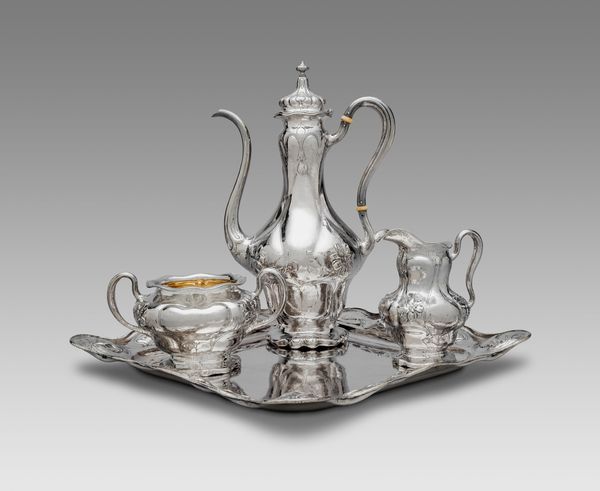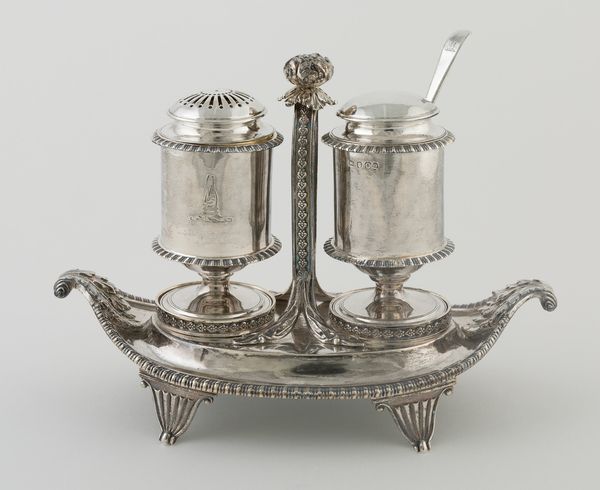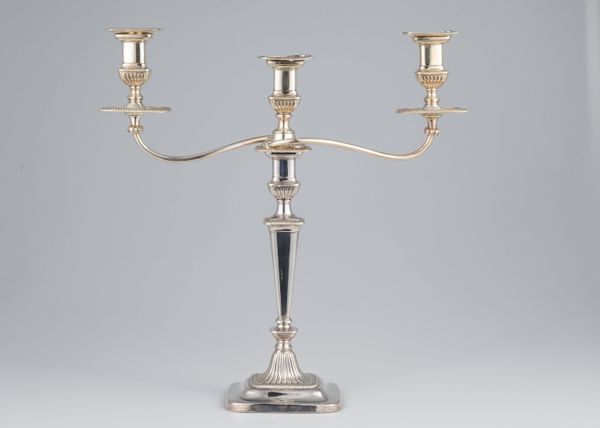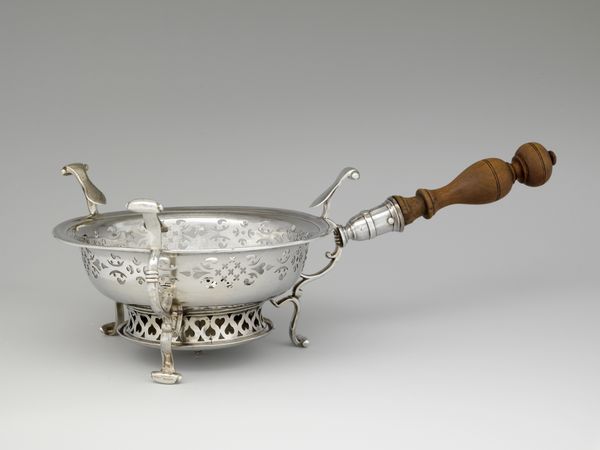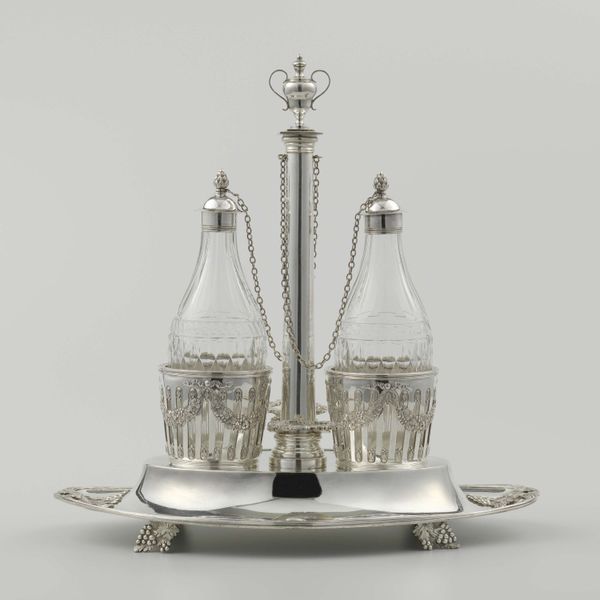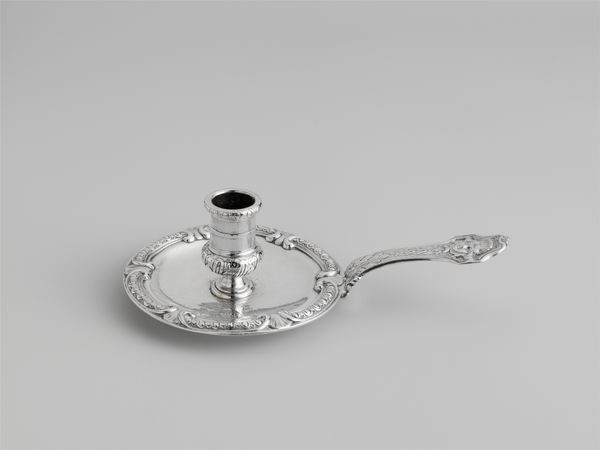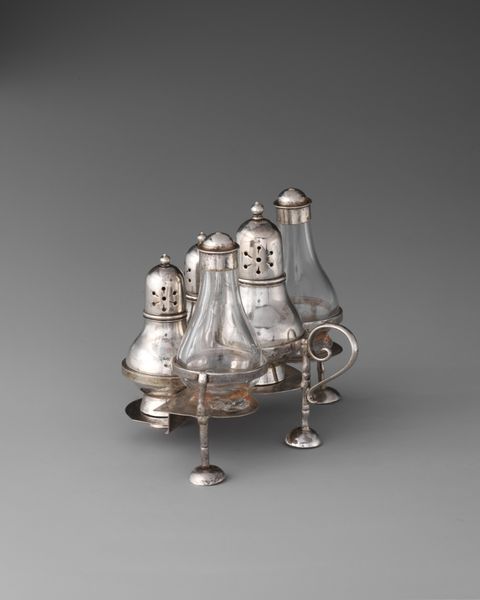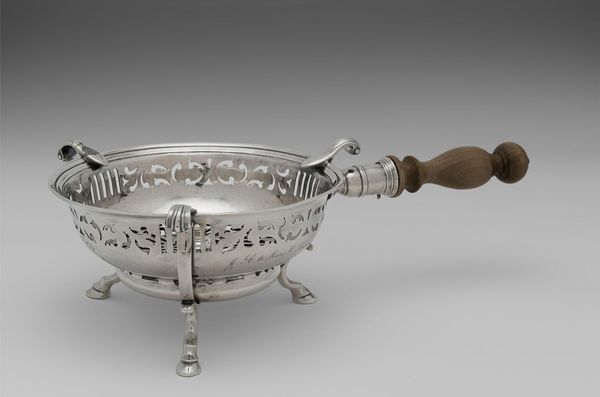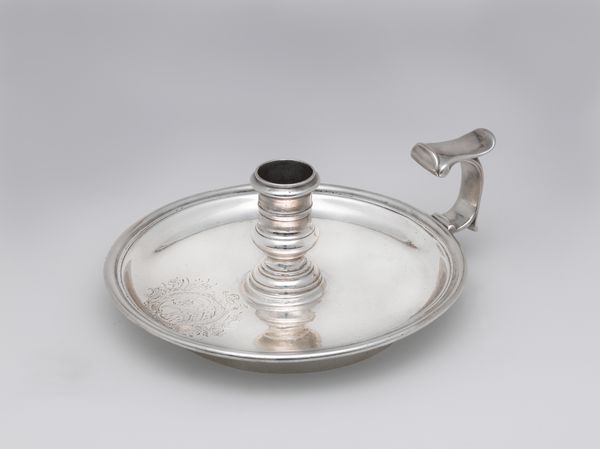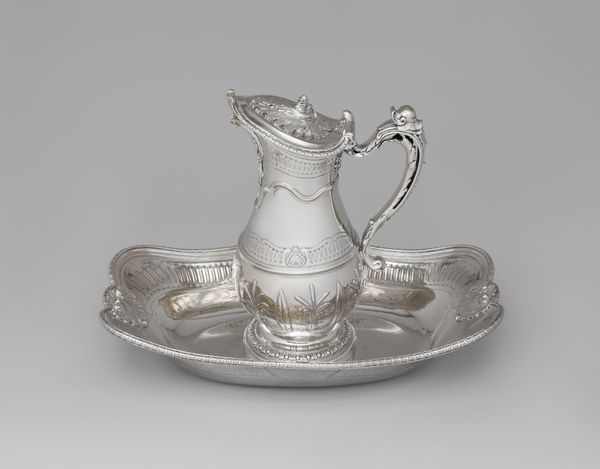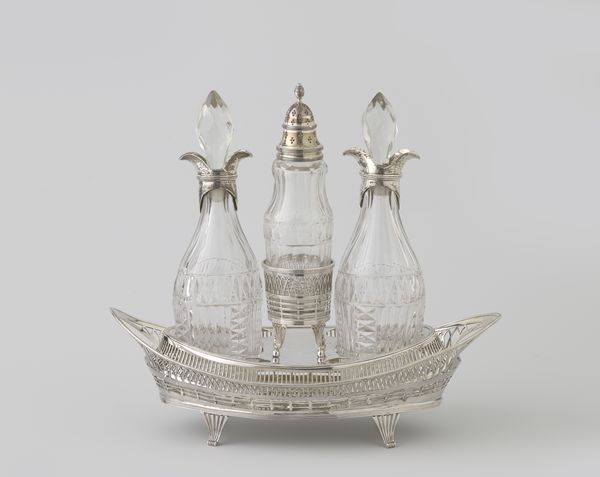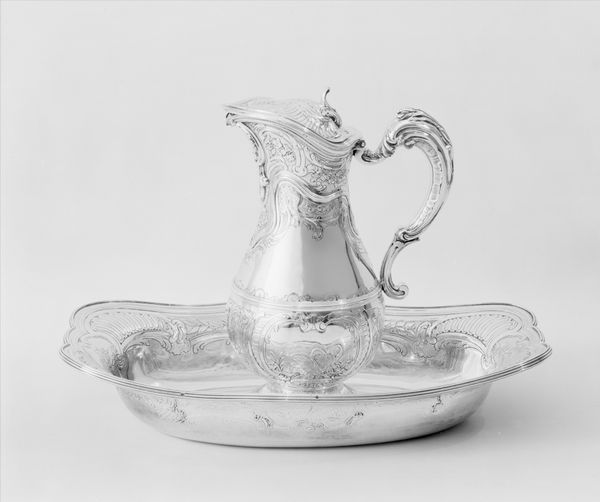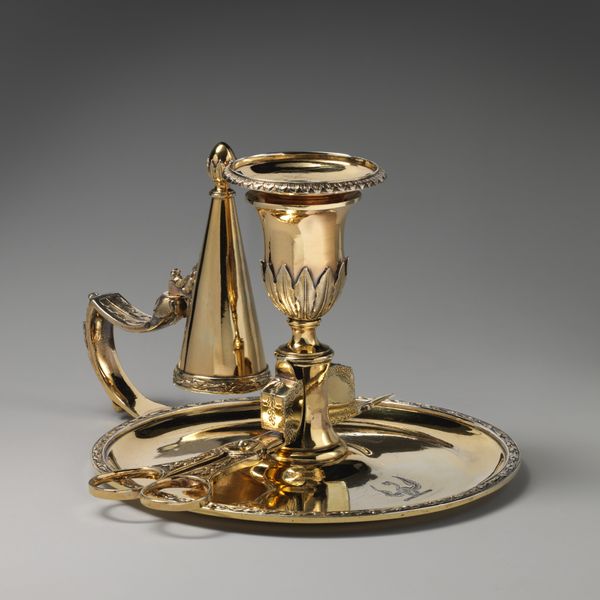
Dimensions: Overall: 5 1/16 x 9 5/8 x 4 3/4 in. (12.9 x 24.4 x 12.1 cm); 17 oz. 17 dwt. (556.5 g) Stand with only attached parts (without bobeche): H. 4 3/4 in. (12.1 cm); 14 oz. 9 dwt. (449.2 g) Bobeche: 3/4 x 2 11/16 in. (1.9 x 6.8 cm); 1 oz. 9 dwt. (44.7 g) Extinguisher / Douter: 3 x 1 1/4 in. (7.6 x 3.2 cm); 14 dwt. (21.8 g) Snuffers: 7/8 x 5 3/16 in. (2.2 x 13.2 cm); 1 oz. 3 dwt. (40.8 g)
Copyright: Public Domain
Editor: Here we have Joseph Lownes’ silver candle holder, dating roughly between 1790 and 1810. The streamlined curves give it an almost modern feel, but I’m curious how this piece might have been perceived in its own time. What stands out to you about it? Curator: Well, this candle holder speaks volumes about the rituals and societal structures of the late 18th and early 19th centuries. It wasn't just about providing light; it reflected status and taste. Consider how the Rococo style, though waning, still influenced design with its emphasis on elegance and asymmetry. Editor: Elegance is definitely a key word here. How did owning something like this impact someone's social standing? Curator: Silver objects like these were expensive. Owning such pieces indicated wealth and therefore, power. Objects like these also reinforce societal expectations – a neat candlestick implies that your home (and by extension your life) is well kept. Possessing this in the era also implicitly states the owners access to trade routes with various silversmiths. Editor: So, it's not just an aesthetic choice, but also a socio-political statement? Curator: Exactly. It is important to consider who could access and possess these luxury items and how these possessions would place people within social and political structures. Think about the context—who commissioned it? Who would have used it? How does this object reflect the complex relationships between artisans, patrons, and consumers in a changing world? Editor: That makes me see it in a completely new light, it’s interesting to see how an everyday object holds layers of information about society. Curator: Indeed. Studying art isn't merely looking; it's questioning the silent narratives embedded within objects, and how these influence perceptions of value, taste and power.
Comments
No comments
Be the first to comment and join the conversation on the ultimate creative platform.
